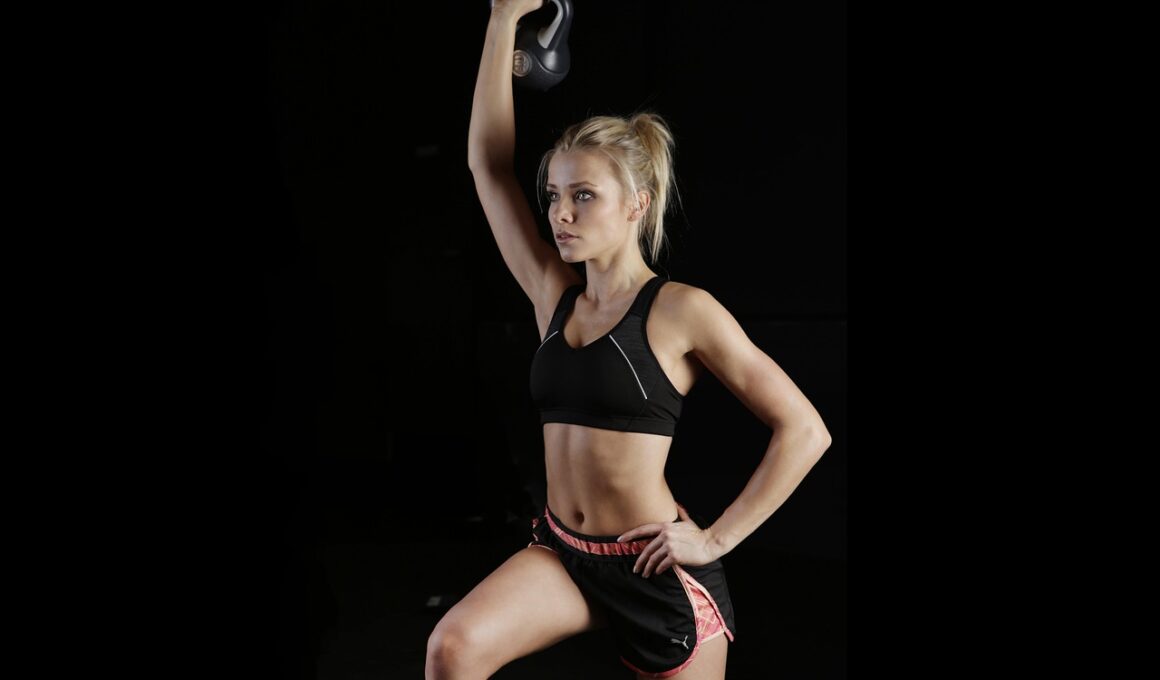How to Balance HIIT With Other Cardiovascular Training Methods
High-Intensity Interval Training (HIIT) has gained remarkable attention due to its effectiveness in improving cardiovascular fitness. One of the most significant advantages of HIIT is its ability to deliver a potent workout in a shorter time frame compared to traditional training methods. However, balancing HIIT with other cardiovascular approaches can maximize fitness outcomes. It’s essential first to establish a baseline by assessing your current cardiovascular fitness level. This allows for suitable planning of your HIIT routines alongside steady-state exercises. Gradually integrating HIIT into your program prevents burnout and aids in recovery. Sufficient hydration and nutrition are essential for supporting this regimen. Focus on nutrient-dense foods that fuel your workouts and enhance recovery post-exercise. Set realistic goals to monitor your progress effectively. Utilizing a fitness tracker can offer insights into your performance. Furthermore, consider alternating HIIT with low-intensity steady-state (LISS) exercises, which keeps your workouts varied and enjoyable. This approach also helps with active recovery, ensuring your heart remains challenged while facilitating better endurance overall. Remember, recovery is just as crucial as the workout itself in any fitness journey.
Incorporating flexibility into your workout allows for better balance between HIIT and other forms of cardiovascular training. One effective way to achieve this is by scheduling your workouts weekly, thus providing ample recovery time. A balanced schedule could involve three HIIT sessions supplemented by two to three lower-intensity cardio sessions. The blend improves stamina and helps prevent injury while boosting fitness levels overall. Variations in intensity and duration help keep your routine engaging, thereby enhancing adherence to your fitness goals. High-impact workouts can be taxing, so listen to your body’s signals. If fatigue sets in, consider reducing HIIT frequency and increasing LISS sessions until you feel adequately recovered. Integrating strength training into your plan can also yield significant benefits, as it supports cardiovascular performance while improving muscular endurance. Engaging in cross-training by alternating between running, cycling, and swimming can also prove beneficial. Not only does this vary the muscle groups used, but it also encourages well-rounded fitness. Lastly, joining a group or class can add a motivational factor when increasing the enjoyment level of your workouts, promoting consistency in your training regimen.
Assessing Training Progress
Monitoring your progress is key to understanding how well you’re balancing HIIT with other cardio methods. Tracking metrics such as heart rate, perceived exertion, and workout duration can help assess cardiovascular improvements. Using tools like heart rate monitors can provide real-time feedback, allowing you to adjust intensity as needed. Determine the ideal heart rate zones for both HIIT and steady-state workouts. HIIT typically warrants higher heart rates; aim for 80-90% of your maximum during intervals. In contrast, steady-state training can be maintained at 60-75% of maximum heart rate. Recording your performance over time allows you to see endurance gains, recovery efficiency, and enhanced workout capacity. Additionally, keeping a fitness journal can be invaluable. Writing down your workouts, feelings, and any physiological changes helps track trends over your training period. Likewise, adjusting your goals based on the ongoing assessment leads to achieving significant advancements. When progress plateaus, don’t hesitate to consult a fitness expert who can offer personalized advice tailored to your journey. Getting feedback might just be the change you need to ignite further improvements in fitness and health.
Avoiding burnout is essential when balancing HIIT and other cardiovascular training methods. HIIT is demanding, and without proper recovery and adaptation, you might experience overtraining symptoms. Incorporating active recovery days is crucial. These days may include engaging in light walks or yoga sessions focused on relaxation and rejuvenation. This approach not only aids the body’s recovery but also maintains motivation, giving you the necessary downtime. Furthermore, being mindful of mental health is as important as physical fitness. Allow yourself flexibility to adapt your routine accordingly. Try new workouts or design engaging warm-up sessions to keep training fresh and exciting. Remember that fitness is a long journey rather than a race. Engage with your progress and celebrate small victories along the way. Engaging in fun physical activities outside the gym can also contribute significantly to overall fitness and joy. Consider hiking, cycling, or dancing as alternative ways to enhance cardiovascular fitness without following a stringent workout schedule. Such activities can serve as a means of relaxation and rejuvenation, helping maintain a positive mindset towards your overall fitness goals.
Nutrition and Hydration
Balancing HIIT with other cardiovascular training demands appropriate nutrition to ensure optimal performance. Focus on a balanced diet, rich in whole-food ingredients, proteins, healthy fats, and carbohydrates to sustain energy levels during workouts. High-quality protein sources such as chicken, fish, beans, and legumes are essential for muscle recovery. Carbohydrates provide the necessary energy for intense workouts, while healthy fats play a vital role in hormone production and recovery. Incorporate complex carbohydrates like whole grains, oats, and sweet potatoes to fuel your HIIT sessions. Hydration is equally critical; past performance studies indicate dehydration can significantly impact overall workout effectiveness. Ensure you drink enough water throughout your day, particularly before, during, and after workouts. Sports drinks can help replenish lost electrolytes, especially after intense HIIT sessions. Experiment with timing your meals effectively; consuming smaller meals packed with nutrients about 1-3 hours before training may optimize energy levels. Post-workout, focus on your recovery meals within the optimal 30-60 minutes window, replenishing both energy and nutrients to promote muscle recovery. This approach creates a solid foundation for progression in your cardiovascular fitness journey.
Finding the right balance in your overall workout regime is a dynamic process. Adapting your approach based on how your body responds is crucial. As you establish a good rapport with your training methods, adjust your workouts according to any changes in energy levels, performance, and even goals. Don’t forget to include variety in your HIIT workouts; you can change exercises, intervals, or even training locations to keep your body guessing and engaged. The effectiveness of balancing HIIT with other cardiovascular training lies not just in the workout itself, but in the holistic understanding of your fitness needs. Including other relevant activities or sports can further enrich your program, allowing for enjoyment and different challenges. Consider alternatives like high-intensity cycling or dance classes to keep things exciting. Building community by training with friends or in groups can provide beneficial motivation and encouragement. Sharing your challenges, successes, and experiences creates a supportive environment that fosters growth and fitness improvements. Finally, ensure you remain patient and persistent as you strive towards balancing HIIT effectively with other cardiovascular training methods.
The Final Takeaway
Balancing HIIT with other cardiovascular training methods is vital for achieving sustainable fitness benefits. The combination encourages improved cardiovascular endurance and overall fitness. By strategically planning workout routines and incorporating various intensity levels, you’ll ensure workouts remain effective and enjoyable. Don’t shy away from exploring different types of exercises, as they contribute to a well-rounded approach that improves fitness and prevents burnout. Listening to your body’s cues and accommodating your training based on those signals is essential for long-lasting results. Adequate rest and recovery will ensure that the body can adapt to heightened workouts, which is especially important in rigorous regimens like HIIT. Remember to embrace flexibility regarding your training schedule, allowing for adjustments when necessary without feeling guilty. Utilizing tracking tools will keep you accountable and aware of your progress so you can make informed decisions. Sharing your journey with the community enhances motivation and support. Lastly, make nutrition and hydration a priority, as they play a critical role in recovery and performance. With commitment and a balanced approach, you will witness impressive gains in cardiovascular fitness and overall health.


